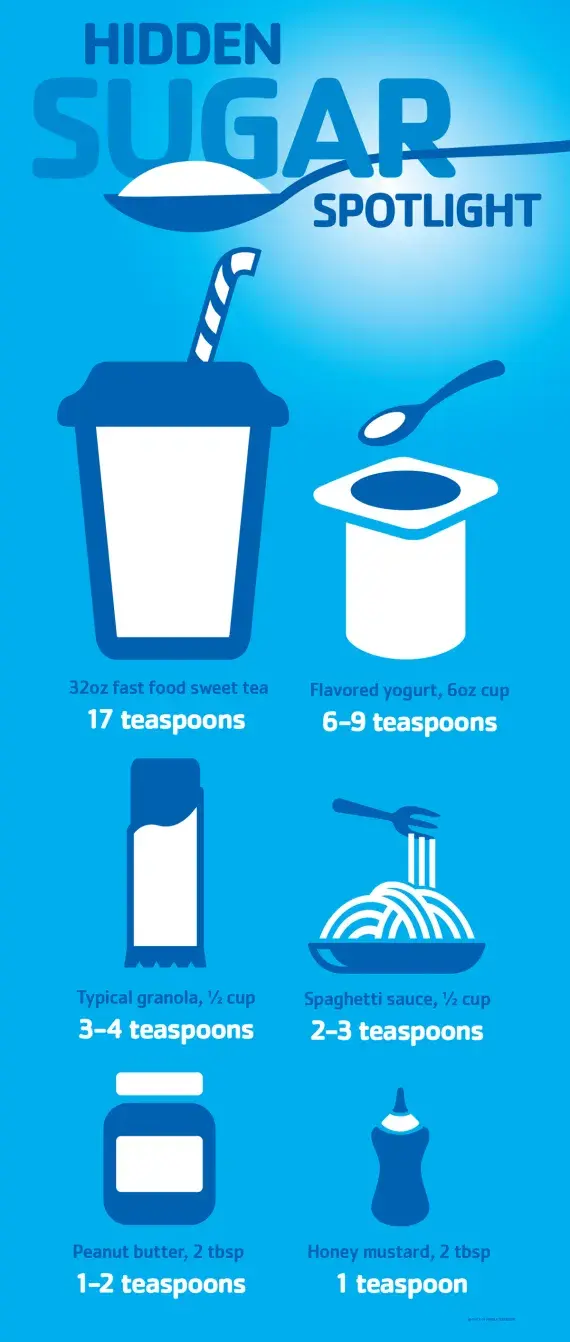Too often we hear, “Don’t eat sugar!” and believe that means all sugar is the enemy. It’s not. But the biggest challenge most of us face is that we may not realize how much sugar we are actually consuming. We also may not know how our body uses sugar.
First, it’s important to understand that all food we consume ultimately turns to sugar. Our body uses glucose (sugar) as its preferred source of energy. That said, not all food is created equal!
Our goal should not be to “Avoid Sugar!” but rather to "Limit Added Sugar."
We should focus on eating more whole foods that pack a nutritional punch. But many foods have added sugars and offer little-to-no nutritional value. Added sugars are sugars & syrups that are added to foods or beverages when they are processed or prepared. When evaluating your sugar intake, focus on limiting these added sugars, not the naturally occurring sugars such as those in milk & fruits.
But how much added sugar should we limit ourselves to? The recommendation for women is to eat less than 6 teaspoons daily. For men, it's less than 9 teaspoons.
Often added sugars try to sneak by with other names. Make sure to read the ingredient list on products to help you identify these added sugar culprits: sucrose, high fructose corn syrup (HFCS), evaporated cane juice, fructose, glucose, dextrose, syrup, cane sugar, raw sugar, corn syrup, honey, molasses, and fruit juice concentrate.
Tips for Cutting Back on Sugar
Once you start spotting all the hidden sugars in our foods, it can be tempting to throw up your hands in defeat. Don’t do it! I’ve listed some practical steps you can take to start cutting back on sugar today.
In Beverages:
- If you routinely add sugar, sweetened creamer or honey to coffee, hot tea or iced tea, try cutting it by half and wean down from there.
- To naturally add flavor and sweetness in coffee, try cinnamon, nutmeg, or cardamom!
- Swap out sodas, sports drinks, sweet teas and juices. These are full of added sugars. Instead, try unsweetened tea or club soda with lemon or lime. But remember: water is always the best choice!
In Breakfast Foods:
- If you routinely add sugar to oatmeal or cereal, try adding fruit instead or cut by half.
- Thaw frozen berries (warm in microwave) and use in place of syrup on waffles or pancakes.
- Switch out flavored yogurts with plain yogurt. Sweeten it yourself with fruit and a small amount of honey.
At the Grocery Store:
- Choose fresh or frozen fruits. When choosing canned, choose fruit canned in water or natural juice. Choose dried fruits without added sugar.
- Compare food labels and choose products with the lowest amounts of added sugars. Dairy and fruit products will contain some natural sugars. Added sugars can be identified in the ingredients list.
- Buy plain oatmeal instead of flavored packages.
- Choose cereals with little or no added sugars.
- Cut back on processed and packaged foods. Instead, try making your own spaghetti sauce or salad dressings so that you can control how much sugar you add.
In Recipes:
- Instead of adding sugar in recipes, use extracts like almond, vanilla, orange or lemon.
- Replace sugar completely by enhancing foods with spices. Try ginger, allspice, cinnamon or nutmeg.
- When baking cookies, brownies or cakes, cut the sugar called for in your recipe by one-third to one-half. Often you won’t notice the difference.
- Switch out sugar with unsweetened applesauce (use equal amounts).
Establish Healthy Habits with the Y
Ready for a healthier eating approach? Get more information on nutrition counseling and wellness support services offered at your center. Let us partner with you in reaching your healthy living goals!


